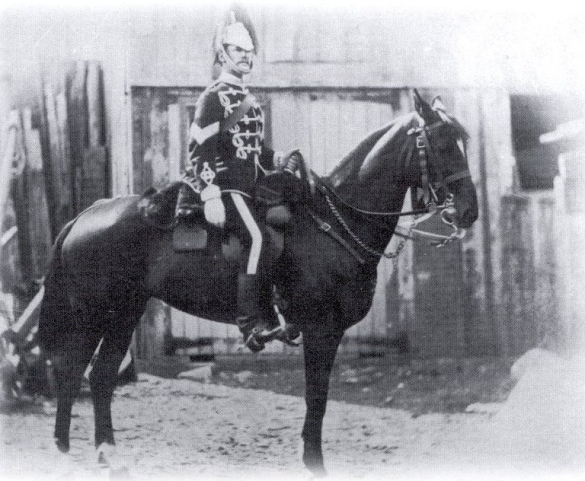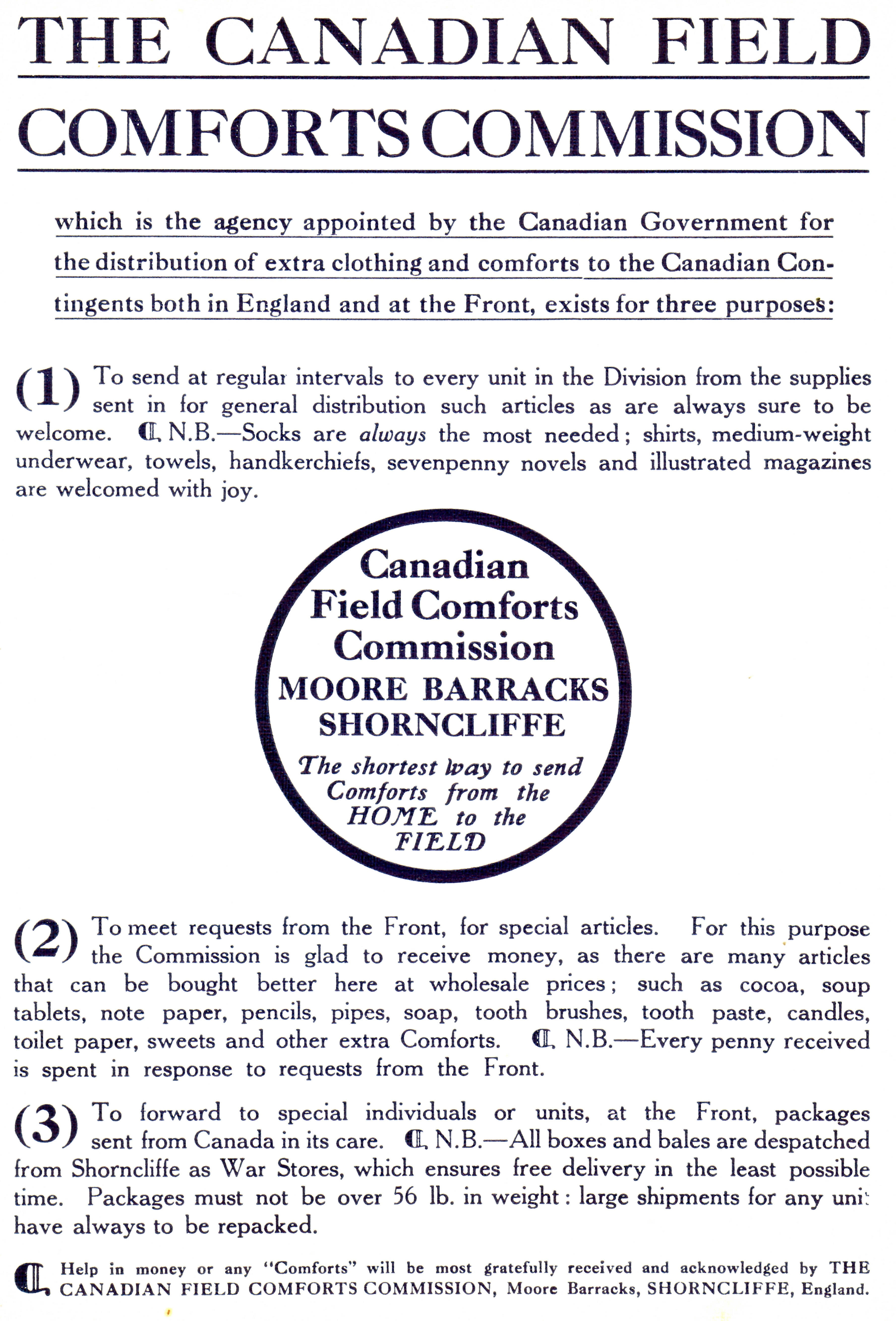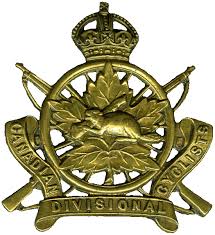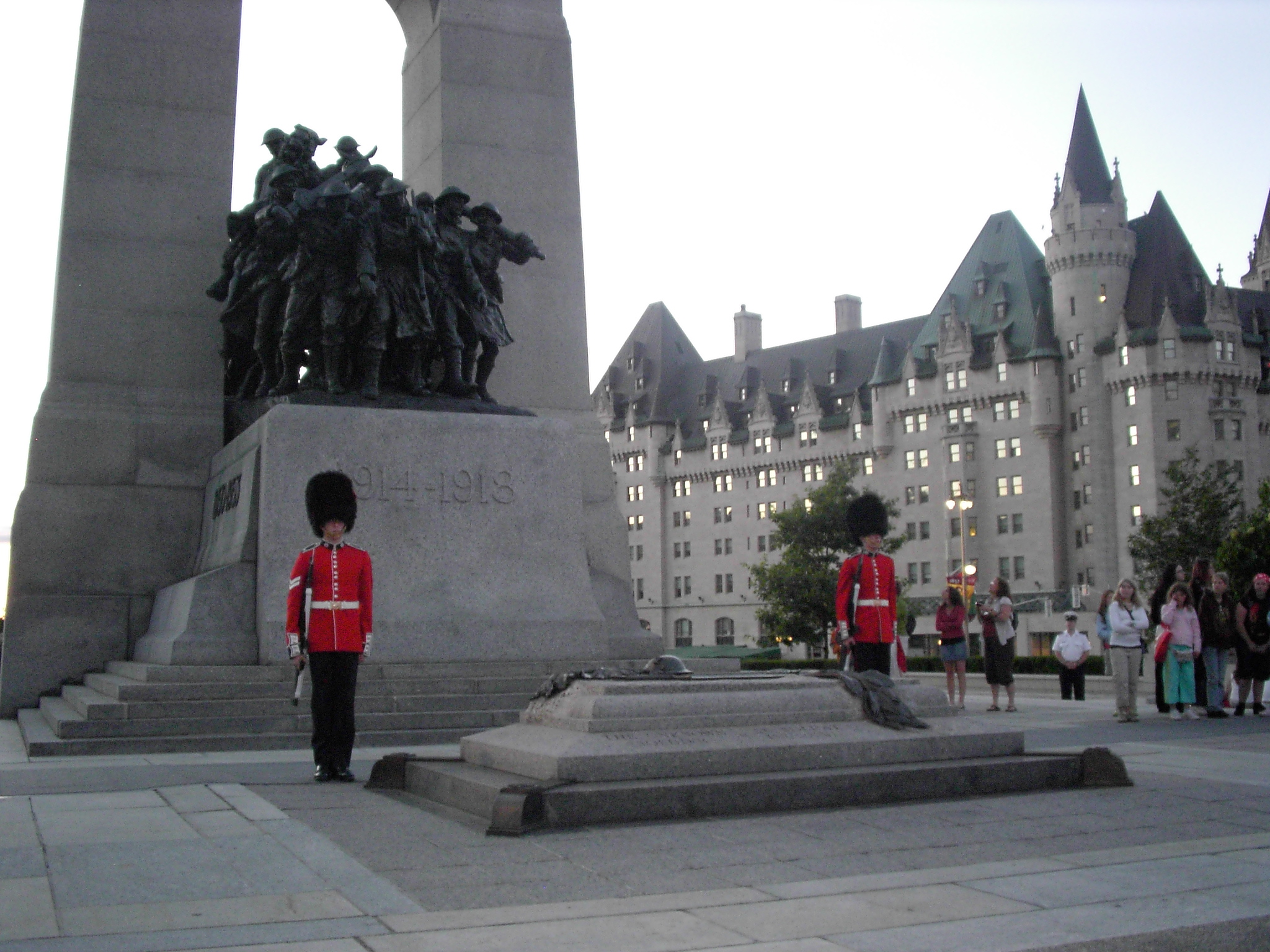|
4 Intelligence Company
4 Intelligence Company (4 Int Coy), in French and officially 4ième Compagnie du renseignement (4e Cie de rens), is a Canadian Forces Primary Reserve Intelligence Branch unit headquartered in Montreal, with a platoon at Valcartier Garrison near Quebec City. It is a part of the 2nd Canadian Division. The unit draws its historical lineage from the 4th Troop of Volunteer Cavalry of Montreal (or Guides) that took part in the actions to repel Fenian raiders attempting to invade Canada in 1866. Members of the unit deploy on domestic and foreign operations, and are primarily responsible for tactical, or combat intelligence. Lineage 4 Intelligence Company perpetuates the presence of a military intelligence unit in Montreal that can be traced to the original 4th Troop of Volunteer Cavalry of Montreal (or Guides), formed on February 7, 1862. The unit was later renamed The Royal Guides or Governor General's Body Guard for Lower Canada, and later The Guides. The uniform (pictured) combin ... [...More Info...] [...Related Items...] OR: [Wikipedia] [Google] [Baidu] |
Intelligence Branch (Canadian Forces)
The Intelligence Branch (french: links=no, Branche du service du renseignement) is a personnel branch of the Canadian Forces (CF) that is concerned with providing relevant and correct information to enable commanders to make decisions. The branch works in a variety of challenging positions, at home and abroad, meeting the needs of commanders and operational planners of the Canadian Forces at all levels and in all environments. Since the branch's inception, members have deployed overseas to Bosnia and Herzegovina, Haiti, Somalia, Rwanda, Timor-Leste, Latvia, Ukraine, Mali, Kuwait, Afghanistan, and Iraq. Branch members have also deployed domestically on a number of operations. These include tasks related to the ice storms in Quebec, floods in Winnipeg, fires in British Columbia and the Canadian military's response to the COVID-19 pandemic. History The first intelligence guides unit in Canada was the "4th Troop of Volunteer Cavalry of Montreal (or Guides)", formed on 7 February 1 ... [...More Info...] [...Related Items...] OR: [Wikipedia] [Google] [Baidu] |
1 Canadian Division
The 1st Canadian Division (French: ''1re Division du Canada'' ) is a joint operational command and control formation based at CFB Kingston, and falls under Canadian Joint Operations Command. It is a high-readiness unit, able to move on very short notice, and is staffed and equipped to meet Canada’s military objectives to counter any potential threat. Formed during the First World War in August 1914, the 1st Canadian Division was a formation of the Canadian Expeditionary Force. The division contained a cavalry squadron and a cyclist company, three infantry brigades (the 1st, 2nd and 3rd Canadian Infantry Brigades, each of four battalions), representing all parts of Canada, three field artillery brigades (roughly equivalent to modern regiments) armed with 18-pounders and engineers, together with elements of the Army Service Corps and the Army Medical Corps. The total war establishment of the Division was 17,873 all ranks, with 4,943 horses. /sup> During its service in the First ... [...More Info...] [...Related Items...] OR: [Wikipedia] [Google] [Baidu] |
Intelligence Units And Formations Of Canada
Intelligence has been defined in many ways: the capacity for abstraction, logic, understanding, self-awareness, learning, emotional knowledge, reasoning, planning, creativity, critical thinking, and problem-solving. It can be described as the ability to perceive or infer information; and to retain it as knowledge to be applied to adaptive behaviors within an environment or context. The term rose to prominence during the early 1900s. Most psychologists believe that intelligence can be divided into various domains or competencies. Intelligence has been long-studied in humans, and across numerous disciplines. It has also been observed in both non-human animals and plants despite controversy as to whether some of these forms of life exhibit intelligence. Intelligence in computers or other machines is called artificial intelligence. Etymology The word ''intelligence'' derives from the Latin nouns '' intelligentia'' or '' intellēctus'', which in turn stem from the verb '' i ... [...More Info...] [...Related Items...] OR: [Wikipedia] [Google] [Baidu] |
6 Intelligence Company
6 Intelligence Company (6 Int Coy; French: ) is a military intelligence unit of the Canadian Army. It is a line unit that falls directly under 3rd Canadian Division command, which is headquartered in Edmonton. The company is divided into three platoons, which are located in Vancouver, Winnipeg, and Edmonton, with a detachment in Calgary. The members of the unit are recruited from other military trades as well as from various civilian organizations. The intelligence operators and intelligence officers of the unit train regularly in order to support domestic and foreign missions at the tactical, operational, and strategic levels. Lineage The unit history dates to August 30, 1950, when No. 4 Intelligence Training Company was formed in Vancouver (though the formation of the unit was announced by Army headquarters February 27, 1950). On July 15, 1956, the minister of national defence approved the relocation of a detachment to Edmonton. Two years later Western Command proposed that t ... [...More Info...] [...Related Items...] OR: [Wikipedia] [Google] [Baidu] |
3 Intelligence Company
3 Intelligence Company (abbreviated 3 Int Coy) is a line unit reporting directly to the 5th Canadian Division which is headquartered in Halifax, Nova Scotia. The Intelligence Operators & Intelligence Officers of the unit train regularly to augment their Regular Force counterparts on domestic and foreign operations. Tracing its lineage to the original 3 Intelligence Company (1950) that was dissolved at Unification, the current unit was stood up on November 4, 1995 at a parade near the old library building in Royal Artillery Park, downtown Halifax. Lineage The Canadian Army announced the formation of 3 Intelligence Company on February 27, 1950 and the unit was formally stood up on November 15, 1950. The first commanding officer was Major Edward Fairweather Harrington who had formerly served in the Halifax Rifles (23rd Armoured Regiment). Maj Harrington served in the First World War with the Royal Flying Corps, and in the Second World War with the Canadian Intelligence Corps. The ... [...More Info...] [...Related Items...] OR: [Wikipedia] [Google] [Baidu] |
7 Intelligence Company
7 Intelligence Company (abbreviated 7 Int Coy) is a Canadian Forces Primary Reserve Intelligence Branch unit based in Ottawa.{{cite web, title=7 Intelligence Company, url=http://www.army-armee.forces.gc.ca/en/5-canadian-division/7-intelligence-company/index.page, website=Canadian Army, access-date=17 April 2018 It is part of the Canadian Army Intelligence Regiment. The Intelligence Officers and Operators of the unit reside in the National Capital Region. They deploy on domestic and foreign operations, and are primarily responsible for tactical, or combat intelligence. History Ottawa's reserve intelligence unit, originally named 2 Intelligence Platoon, was established 18 February 1993 by the Treasury Board as a support unit for the Special Service Force, in Canadian Forces Base Petawawa. The unit was transferred to 1st Canadian Division in 1994 and then to 4th Canadian Division (then called Land Force Central Area) on 8 April 1995. The unit was officially renamed 7 Intelligence ... [...More Info...] [...Related Items...] OR: [Wikipedia] [Google] [Baidu] |
2 Intelligence Company
2 Intelligence Company (abbreviated 2 Int Coy) is a Canadian Armed Forces Primary Reserve Intelligence Branch unit based in Toronto, headquartered at Denison Armoury. It is part of the 4th Canadian Division. The Intelligence Officers and Operators of the unit reside in the Greater Toronto Area, work as professionals in the business community and are also active in numerous community service organizations. They deploy on domestic and foreign operations, and are primarily responsible for tactical, or combat intelligence. Recent deployments include to Cyprus, Bosnia, Afghanistan, Kuwait, and Canada. Lineage 2 Intelligence Company perpetuates the presence of a military intelligence unit in Toronto that can be traced back to the original No. 2 Guides Company that was formed April 1, 1903. As mounted units, Guides Companies were tasked to survey their respective regions as well as to collect information of potential military intelligence value. Upon mobilization for World War I, G ... [...More Info...] [...Related Items...] OR: [Wikipedia] [Google] [Baidu] |
History Of The Canadian Army
The history of the Canadian Army, began when the title first came into official use in November 1940, during the Second World War, and is still used today. Although the official titles, Force Mobile Command, and later Land Force Command, were used from February 1968 to August 2011, "Canadian Army" continued to be unofficially used to refer to the ground forces of the Canadian Armed Forces, much as it has been from Confederation in 1867 to the present. The term was often even used in official military publications, for example in recruiting literature and the official newspaper of the Canadian Forces, ''The Maple Leaf''. On August 16, 2011, the title, "Canadian Army", was officially restored, once again bringing the official designation in line with common and historical usage. Formation Prior to Canadian Confederation in 1867, defence for the colonies that comprise present-day Canada was dependent on the armies of colonial powers. The military of New France (1608–1763) was depen ... [...More Info...] [...Related Items...] OR: [Wikipedia] [Google] [Baidu] |
Military History Of Canada
The military history of Canada comprises hundreds of years of armed actions in the territory encompassing modern Canada, and interventions by the Canadian Forces, Canadian military in conflicts and peacekeeping worldwide. For thousands of years, the area that would become Canada was the site of sporadic intertribal conflicts among Aboriginal peoples in Canada, Aboriginal peoples. Beginning in the 17th and 18th centuries, Canada was the site of French and Indian Wars, four colonial wars and two additional wars in Nova Scotia and Acadia between New France and New England; the conflicts spanned almost seventy years, as each allied with various First Nation groups. In 1763, after the final colonial war—the Seven Years' War—the British emerged victorious and the French civilians, whom the British hoped to assimilate, were declared "British Subjects". After the passing of the Quebec Act in 1774, giving the Canadians, Canadians their first charter of rights under the new regime, the B ... [...More Info...] [...Related Items...] OR: [Wikipedia] [Google] [Baidu] |
T-72
The T-72 is a family of Soviet/Russian main battle tanks that entered production in 1969. The T-72 was a development of the T-64, which was troubled by high costs and its reliance on immature developmental technology. About 25,000 T-72 tanks have been built, and refurbishment has enabled many to remain in service for decades. It has been widely exported and has seen service in 40 countries and in numerous conflicts. The T-90 introduced in 1992 is a development of the T-72B; production and development of various modernized T-72 models continues today. Development Development from the T-64 The T-72 was a product of a rivalry between design teams. Morozov KB was led by Alexander Morozov in Kharkiv. Uralvagon KB was led by Leonid Kartsev in Nizhny Tagil. To improve on the T-62, two designs based on the tank were tested in 1964: Nizhny Tagil's Object 167 (T-62B) and Kharkiv's Object 434. Ob. 434 was a technically ambitious prototype. Under the direction of Morozov in Kharkiv, a ... [...More Info...] [...Related Items...] OR: [Wikipedia] [Google] [Baidu] |
Quebec
Quebec ( ; )According to the Canadian government, ''Québec'' (with the acute accent) is the official name in Canadian French and ''Quebec'' (without the accent) is the province's official name in Canadian English is one of the thirteen provinces and territories of Canada. It is the largest province by area and the second-largest by population. Much of the population lives in urban areas along the St. Lawrence River, between the most populous city, Montreal, and the provincial capital, Quebec City. Quebec is the home of the Québécois nation. Located in Central Canada, the province shares land borders with Ontario to the west, Newfoundland and Labrador to the northeast, New Brunswick to the southeast, and a coastal border with Nunavut; in the south it borders Maine, New Hampshire, Vermont, and New York in the United States. Between 1534 and 1763, Quebec was called ''Canada'' and was the most developed colony in New France. Following the Seven Years' War, Quebec b ... [...More Info...] [...Related Items...] OR: [Wikipedia] [Google] [Baidu] |
Fleurs-de-lis
The fleur-de-lis, also spelled fleur-de-lys (plural ''fleurs-de-lis'' or ''fleurs-de-lys''), is a lily (in French, and mean 'flower' and 'lily' respectively) that is used as a decorative design or symbol. The fleur-de-lis has been used in the heraldry of numerous European nations, but is particularly associated with France, notably during its monarchical period. The fleur-de-lis became "at one and the same time, religious, political, dynastic, artistic, emblematic, and symbolic," especially in French heraldry. The fleur-de-lis has been used by French royalty and throughout history to represent saints of France. In particular, the Virgin Mary and Saint Joseph are often depicted with a lily. The fleur-de-lis is represented in Unicode at in the Miscellaneous Symbols block. Origin The ''fleur de lis'' is widely thought to be a stylized version of the species ''Iris pseudacorus'', or ''Iris florentina''.Stefan Buczacki However, the lily (genus lilium, family Liliaceae) and the ... [...More Info...] [...Related Items...] OR: [Wikipedia] [Google] [Baidu] |







.jpg)
